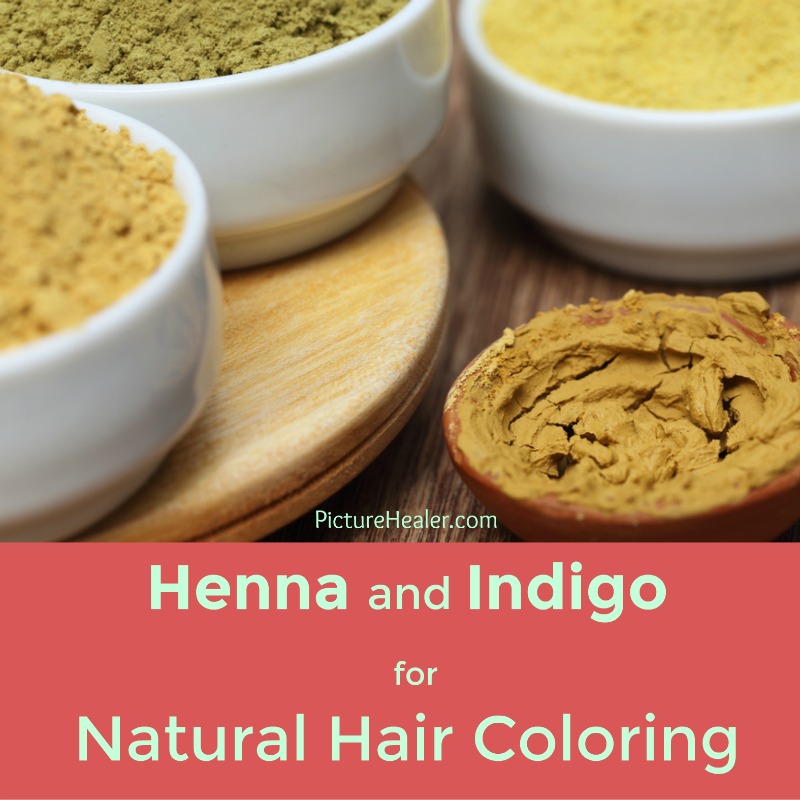Henna and Indigo Natural Hair Coloring
/Searching for the natural hair dye
It is very frustrating to find a hair color that is not full of chemical and does not damage the health of hair and body. We heard of stories that people gets an allergic reaction or even cancer from repeated use of hair dyes. You might experience itching, painful, and falling hair after hair coloring. If you have gray hair that starts at a younger age, you know how much work you need every month to cover up the root. Going to a hair salon is time-consuming and costly. Dying your hair at home using drug-store coloring is cheaper, but might damage the hair even more because we are not the expert to find out the right product, and can end up with undesirable color and damaged hair.
There are many hair coloring products claiming to be natural and good for your health, but unfortunately, they still contain a lot of other less damaging chemicals. If the product needs only 10 minutes to color, needs two tubes to mix, or contains hydrogen peroxide, it is not natural enough in my opinion. Through my research and trial, the only hair color that is truly NATURE is henna and indigo powder. I am sure some people will still be allergic to them, but they are as natural as you can find in today’s hair color industry.
What are Henna and Indigo
Henna and Indigo are both dried herbal powder from plants. Henna produces an orange-red color, and Indigo produce blue dye. A mix of these two dyes in various proportions produces different shades of brown, red and near-black. Henna is traditionally used to paint intricate drawings on the hands and feet according to Indian culture. It is a temporary dye that will fade away eventually. The staying power of the dye depends on the quality of herbal powder, coloring time, technique and other additives.
Formulating your color
Depending on your natural hair color and your desired hair color, you have to pick the right quantity of the herbal powders to get the result you like. Here are some general guidelines:
Red – use Henna only, the result will be bright orange-red.
Light brown – 2/3 of Henna and 1/3 of Indigo
Medium brown – ½ Henna and ½ Indigo
Dark brown – 1/3 of Henna and 2/3 of Indigo
Black – you need 2 step process, use pure Henna first for 45 minutes, wash out with water, and apply pure Indigo for at least one hour.
Gray hair – Similar to the black, you need 2 step process. Apply pure Henna for 45 minutes first, wash out with water, and then apply the desired color (light to dark brown with different ratios of Henna and Indigo, see above). Wait for at least one hour before wash out.
The reason for the two-step process is for Indigo dye to attach to Henna dye. Without Henna dye first, the Indigo might come out easily. You have to experiment to find what method works for your hair best.
The Henna and Indigo dye can not lighten your hair color. It just coats the hair shaft and fades away gradually. It gives a natural look, and blends in the gray hair.
The procedure of hair coloring with Henna and Indigo
If you want to color with Henna and Indigo at home, here is the basic process.
1. Mix the Henna powder with hot water and some acidic liquid, and let it sit for at least 30 minutes. You will see the paste turning orange. If you touch with a finger, your finger will be stained orange. That means it is ready to dye. Some people like to use black tea, coffee instead of hot water, but it is personal preference. I like to add some lemon juice, orange juice, or vinegar to release the dye.
If you are using one step process, mix both powders in chosen proportion, add hot liquid and some lemon, orange juice or vinegar, and wait for about 30 minutes.
2. Wash your hair, towel dry. Put on gloves and start to massage the paste into the hair, section by section. Some people use a brush, but it is easier just to use hands. Make sure temples and roots are covered. Cover with plastic hat or towels and wait for at least 45 minutes if you use a two-step process.
Wait for one to two hours if you use one-step process. Then wash hair with a lot of conditioner and water. You are done.
3. Prepare the second batch of powders if you are using the two-step process. Add Indigo or Indigo Henna mixture with warm water. Indigo does not need to be mixed with acidic liquid to release the dye. So we do not need to pre-mix it. You can still mix in acid liquid if your second-step powder contains both Henna and Indigo.
4. Wash out the first-step colors on the hair. Towel dry and start to apply the second-step herbal paste. Wait for one to two hours and wash out with water and conditioner. Done.
As you can see, it is a messy and long process. That is the downside of Henna hair dye. With practice, the process will become easier and less messy.
How to pick the right Henna and Indigo as hair dye
There are various quality and cost for Henna and Indigo powder. Much premixed herbal coloring contains other chemicals or a secret blend of herbs. Stay away from them if you can not find exactly what is used. There might be some harmful ingredients hidden. What you need is 100% pure Henna and Indigo only. Some might add one or two more herbs. You need to research to make sure it is safe first.
Body art quality Henna is great but not required. The more important is its freshness. Check the expiration date, if the herb is too old, the dye might not release well. If the Henna does not change to orange color in the first hour after mixing with hot water and acidic liquid, something is wrong and don’t bother putting it on your hair. One product I like is the "White Mountain Henna", especially their "cover the gray" line. Not affiliated. I just like the consistent result. There are many Henna products in the market. The Higher price is not always better, and fewer ingredients are better than a long list of ingredients.
Healthy, shiny, and natural hair takes effort. Make sure all shampoo, conditioner, and hair products have no sulfates, phthalates, parabens, propylene glycol, mineral oil, alcohol, and fragrance. Basic oil such as Jojoba, Argan, Grapeseed or Coconut oil is all you need to nourish the hair. If the ingredients of a product are too long and complicated to understand, it is probably not the best for you.
Coloring hair with Henna can be confusing in the beginning. Sometimes it is more of an art than science and takes some experiments to get the result you want. I hope this article get you started in the right direction. Leave a comment if you have any thoughts or experiences with Henna/ Indigo hair coloring.







